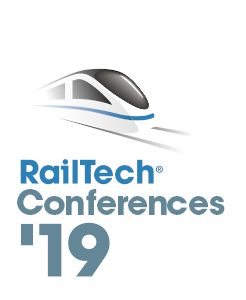 Jan Swier
Jan Swier
Expert in the field of asset management, outsourcing and benchmarking
Presentation title:
Optimum result through control on the need for maintenance
Summary
ProRail has outsourced maintenance for more than 20 years. The first 10 years based on input contracts with work plans and price agreements. The performance was reasonable, the costs increased gradually. A drawback, however, was that the contractor is not responsible for the performance but for the execution of the work plan. That changed when performance contracts were introduced. In this the performance is the goal and the contractors are given the opportunity to decide for themselves how it can best be realized. The result is that costs went down by> 25% and performance improved.
Three adjustments in the strategy are the basis for the better results:
• Managing maintenance in an industrial way, using an integral work order system
• Ownership for the quality of a railway line with a permanent team (leader).
• Demand-driven maintenance from the need; management based on risk control.
The three adjustments are related. It is about optimally managing performance risks. To be able to do this, Maintenance & Renewal (M&R) Concepts must be provided for all systems. It systematically collects all knowledge and experience about the chance and impact that performance risks occur and what the most optimal strategy is to control them. New management techniques, such as predictive maintenance and prescriptive data analysis, are now part of the possible strategies, and more risks are explicitly accepted or maintenance frequencies adjusted. Clustering all the risks creates inspection formats, work plans for inspections, maintenance and renewals, and a lists with technical specifications. The plans per asset type are made specific by varying with frequencies and standards. The plans are the input for cost calculations and performance forecasts.
The infrastructure manager is the manager of the generic risk analysis with control measures. Maintainers deduce specific plans for their lines from it. That is the way it is regulated in the aviation- and oil industry, but unfortunately not (yet?) in the rail infrastructure industry in the Netherlands. Due to the circumstances, ProRail and the contractors have now all their own risk analysis and control measures. These differ from each other while the objects and associated performance risks are exactly the same. In fact, the maintenance contractors partly take over the role of the infra manager. They are not, however, connected to the safety management system and their financial risks increase unnecessary. It is inefficient, counterproductive and creates a distance where cooperation is needed. An instructive lesson for other infra managers.
Speaker biography:
Jan Swier (66 yrs) is retired since November 2017 and was a strategic advisor at ProRail Asset Management. After his study civil engineering in Utrecht and military service, he started as a bridge engineering in 1974 at the Dutch Railways (NS). Four years later he became a maintenance managers of bridges, tunnels and installations. In 1989 he joined a McKinsey-team during five month for a restructuring study of NS Infra. In that period the fundament was laid down of all the changes in the rail transport sector in the Netherlands: separation of exploitation and rail infrastructure, outsourcing of engineering and outsourcing of maintenance. Ever since that period he is not technical involved anymore but became a bridge builder between operation and strategy. After five years as a manager of a staff group he started as an internal advisor and project leader for asset management. He was involved in all the organizational changes and contributed to it with the development of new management instruments and skills. He became an expert in the field of asset management, outsourcing and benchmarking, and has shares his expertise with other asset managers, in- and outside the Netherlands. He has recorded his experiences and vision on asset management in a book that was published in 2017 and is still available for strategic advice after his retirement.
